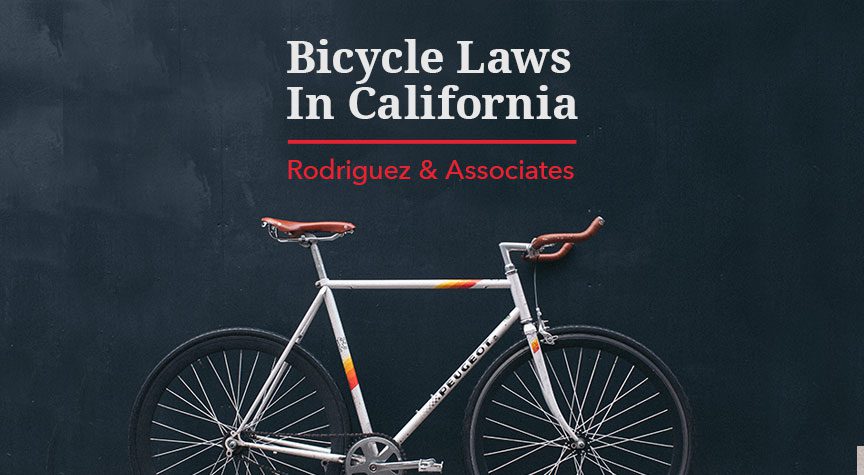Many Californians enjoy bicycling as a leisure activity, as exercise, or as an alternative method of transportation. Bicycling helps the environment by cutting down on fossil fuel consumption and pollution, and riding a bike is significantly less expensive than driving a car. However, despite these advantages, there are some risks associated with bicycling, and bicyclists in California need to know the state’s laws for bicycling to avoid liability for accidents and damages. If you have any further questions regarding bicycle accident liability in California, speak with a knowledgeable Bakersfield bike accident attorney.
California Bike Laws
Bicyclists must follow the traffic laws just like all other motor vehicle drivers. While some bicyclists understand this and ride safely in accordance with the local laws, others may assume they are not beholden to traffic laws since they are not driving motor vehicles. This is not the case, and a bicyclist who causes an accident due to ignoring the traffic laws could face severe legal penalties for doing so. Additionally, a bicyclist who suffers injuries due to his or her failure to abide by California’s traffic laws could lose his or her chance to secure compensation through a personal injury claim.
California follows a comparative negligence law, meaning an injured plaintiff can still sue for damages and secure compensation, even if he or she was partially at fault for those damages. A judge will assess the facts of the case and assign the plaintiff a “fault percentage.” One hypothetical example could involve a bicyclist who fails to signal a turn and collides with a car. The bicyclist sustains severe injuries, but traffic camera recordings show the bicyclist did not signal properly and made an unsafe turn. The judge still recognizes the car’s driver as having a higher duty of care due to the nature of the vehicle and assigns the bicyclist a 25% fault percentage. If the damages in the case are $100,000 and the bicyclist wins, he or she would lose 25% of the case award, receiving $75,000 instead.
Taking the Lane and Riding with Traffic
California state law allows bicyclists to “take the lane,” or move into position in front of another vehicle in the next lane after signaling the lane change. Bicyclists should ride as far to the right in the lane as possible unless making a left turn, avoiding a hazard, or taking a lane. Other drivers should yield to bicyclists taking a lane as they would for other drivers. If a bike lane is available, bicyclists should remain in the lane as long as it is safe to do so.
Bicycles must also ride with the flow of traffic. This means that whatever side of the road a bicyclist is riding, he or she should be traveling in the same direction as the traffic in the closest lane. This helps prevent accidents, particularly from drivers turning onto the street who probably don’t expect to see an oncoming bicycle.
Local ordinances may alter the bike laws in some areas, so bicyclists should be sure they understand their local bicycling laws to avoid accidents and traffic citations. Anyone injured while riding a bicycle, or anyone who sustains injuries or suffers losses due to a negligent bicyclist should reach out to a reliable Bakersfield personal injury lawyer to discuss their options for legal recourse.
